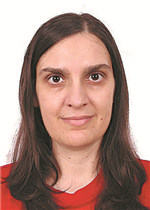
The photograph that greeted me at the entrance to a special exhibition at the Cleveland Museum of Art had a startling familiarity.
The water bristled with the umbrella-like leaves of lotus plants, a grand gathering of bright green parasols under the summer sunlight. Behind them, the gentle slope of a long stone arch bridge balanced a white car and a handful of pedestrians. Willow trees bowed before the shoreline, while a mountain silhouette traced the horizon.

Excitement stirred within me as I realized I had gazed upon that lotus field, walked that bridge, wandered under those willows, and hiked those mountains. "Look, that's the West Lake! That's in Hangzhou, where I live!"
I lingered before the image, sharing my amazement with the family members who had accompanied me — my father, stepmother, uncles and aunt — and with a volunteer at the museum.
How did my hometown of Cleveland, Ohio, just happen to lead a special exhibition titled China's Southern Paradise: Treasures from the Lower Yangtze River with a photograph from my adopted hometown in China? Hangzhou had captured my heart as the region where I met my husband and experienced many coming-of-age moments, including my Chinese-style wedding ceremony. Never did I imagine that Hangzhou would join hands with the city of my childhood to share some of its greatest treasures with my fellow Clevelanders.
But on reflection, none of this should have surprised me. After all, the Cleveland Museum of Art had quietly kindled my passion for China many years ago.
The museum boasts one of the West's most acclaimed collections of Chinese art, spanning over 5,000 years with many notable works. While visiting the museum as a young adult, I was invariably drawn to the scrolls painted with fantastical mountainous landscapes, solemn statues of Buddhas and bodhisattvas, and fine porcelain wares, from celadon green to classic blue and white.
Viewing these Chinese art collections brought me an inexplicable sense of solace, at a time when I was still nursing grief from the untimely loss of my mother. Was it serendipity or evidence of a greater destiny? Regardless, these artifacts offered a different window into China, beyond the politics and posturing that dominated news I encountered about the country.
And once I made the decision to live and work in China, which eventually became a lifelong commitment, complete with a husband and family in Hangzhou, I found myself straddling two countries and cultures that don't always agree.
But the Cleveland Museum of Art, in building a bridge between Cleveland and Hangzhou through this special exhibition, renewed my hope as an example of an American institution that values cultural exchanges with China, even at a time when over 80 percent of my fellow Americans harbor negative views of the country, according to a 2023 survey by the Pew Research Center.
At the special exhibition, I was delighted to show my family in Cleveland renowned artifacts from Hangzhou, including a ceremonial jade disk from the Liangzhu Culture, and the names of museums I frequented there, such as the Zhejiang Provincial Museum. It reminded me of how art has the power to forge connections across cultures and highlight our shared humanity.
My father snapped a picture of me and my stepmother standing in front of that photograph at the start of the exhibition. For one fleeting moment, I stood together with my family in Cleveland before an image of Hangzhou's West Lake, bridging the gap between the two cities that lay claim to my heart. For me, it was truly a cross-cultural work of art.
The writer is a freelancer for China Daily.